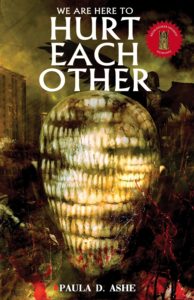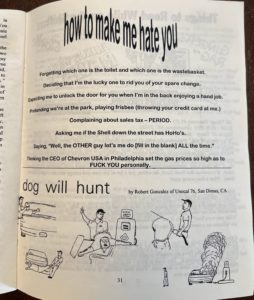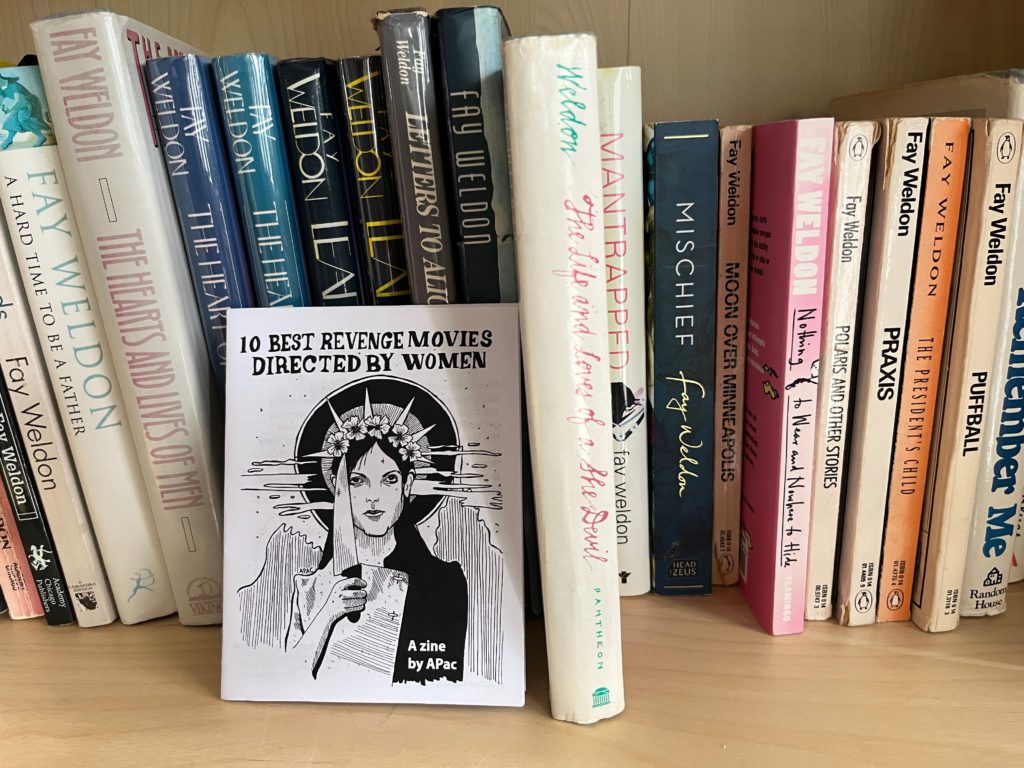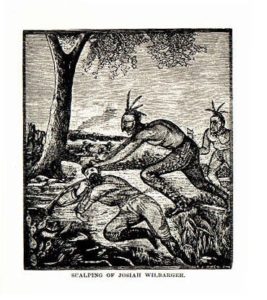Book: Plastic Soul
Author: James Nulick
Type of Book: Fiction, science fiction
Why Do I Consider This Book Odd: It answers questions that science fiction has tried to address for years, among them: What fuels the desire for humans to clone themselves and what do the clones really think about the experience? Nulick takes us from the collective soul to the plastic soul and it’s eerie.
 Availability: This book is available for pre-order for both an “artist” edition as well as a “jank” edition.
Availability: This book is available for pre-order for both an “artist” edition as well as a “jank” edition.
Disclosures: James Nulick is a friend of mine.
Comments: James Nulick has spent the last few years traveling down two different paths. He first introduced readers to his Drake® world in his short story collection, Haunted Girlfriend in the short story, “Body by Drake.” Set in the not-too-distant future, Drake® Corp is almost as important as the government and exists in a world that is only dystopian because it so resembles how we currently live taken to its logical conclusions of ecological destruction, sociological quagmires, and a growing separation between the rich and poor. We saw more of this world in the short story collection Lazy Eyes, a familiar but uncomfortable sense that the roiling inequities that plague us now will take root so deeply that our futures are cast in stone before the calendar pages even get a chance to turn.
As he created Drake® world, James was also exploring an interesting idea that human beings are cosmically linked to one another in ways we don’t often see and seem impossible. In his novel, The Moon Down to Earth, unlikely characters share the same thoughts. A super-morbidly obese Hispanic female shut-in, a mixed race young man who wants to be a rapper, an elderly racist widower living in a trailer – their thoughts at times mirrored each other in a way that pointed toward the mystical, almost as if the much-derided “hive mind” was at play. He later expanded these connections in Lazy Eyes, where animals and humans began to exhibit those cosmic links with each other. The dead live, the voiceless communicate, and the lines of human and animal experiences are blurred.
These two paths meet in Nulick’s latest novel, Plastic Soul. When I first read this novel, the realization that Nulick had been world-weaving all this time, culminating in this unique, frightening yet strangely hopeful novel, was humbling. For years James Nulick has been tossing crumbs for his readers to follow, world-weaving in a manner that in itself seems as magical as the tendrils he sees that hold us together. It’s tempting at times to discuss the existential questions this novel raises, but it almost seems like an insult to me to explore this novel with a larger philosophy to guide you. Philosophy has little place in magic, I think. Any real philosophical examination of this novel would necessitate the use of quantum theory and I am not Richard Feynman. This novel made me feel, at times, as if I were one of the apes who found the obelisk at the beginning of 2001: A Space Odyssey, and now I feel the urge to make tools.
I decided to discuss this book for Oddtober 2024 because it is, at times, so very creepy. This novel is cinematic, the sort of book that creates profound visuals. A medical facility that cloaks unethical activities behind a veneer of sterile luxury juxtaposed with the sort of secretive suburban childhood familiarized in early Spielberg films. Fleets of cars chauffeured by a slender, attractive Asian man named James (private car ownership has been banned in the Drake®-driven universe). A wealthy home with grounds devoted to bee cultivation. A thrift store with couture-priced designer labels. This novel fairly cries out for a cinematic adaptation.
The novel introduces the reader to a world wherein the rich can clone themselves in order to ease their loneliness, only to realize that the human will is no less forceful in medically manufactured human beings. There is a cloying creepiness that is reminiscent of the more clinical elements of David Cronenberg films (if Dead Ringers comes to mind when you read this novel, we can be friends), there is a nervous anticipation as the reader waits to see what will happen when clones are shipped to live with their genetic donors, and a sickening feeling that Nulick is showing us how easily we will be victimized by the very technology we hope will save us, both us and the other living creatures we create.
Ultimately, in science fiction, we’ve learned that even with the best intentions fueling our actions, there is never a good outcome where human clones are concerned. Even when cloning is cloaked with the idea that it benefits mankind, we still have human beings we classify as The Other so we can justify harvesting their organs, forcing them to do dangerous work, or, in the case of Plastic Soul, being used to cure the loneliness their DNA donors experience in their wealthy, exclusionary lives.
To inject a little bit of humor into this very serious discussion, this novel also addresses the age old question of what it is human beings do with their clones: Would you have sex with your clone or robotic replicant if you were able to? James also answers the mostly unasked question of how the clones feel about the option even being on the table in the first place.
If I seem like I am dancing around what is happening in this novel, it is because I am doing just that. To discuss the reasons why people do what they do in Plastic Soul, the real, deep, evolutionary reasons, will absolutely spoil the novel. But I can convey the visuals and give an overall sense of theme by following the book’s layout and telling you a bit about the characters whose names are the chapters in the book.
“MRS NARCISSUS/Sylvie Biusom,” sets up the visuals and overall tone of the novel. Sylvie was named for Sylvia Plath, but unlike her namesake, she lived with her father and was abandoned by her mother. Of course Sylvia Plath’s father, Otto, did not abandon her – he died – but Sylvia as a child interpreted his absence as an abandonment and it affected her for the rest of her life. Sylvie, who was actually abandoned, also carries the impact of that abandonment and it has thwarted her. She does not like people, she loathes being touched, but for all that she adores her father, she still longs for companionship outside of just his company. Her father, a very wealthy man, likes to keep bees, much as Otto Plath did, and Sylvie helps him as much as she can with beekeeping.
Sylvie’s haughty officiousness hides a deep loneliness even as she denies experiencing any sort of sexual attraction because she so dislikes human connection. So how does a person like Sylvie achieve any sort of happiness in life? Watching the Blip – a future means of watching visual media – she sees an ad from The Chrysalis Institute. The ad features a woman sitting across from a mirror image of herself, and asks the question:
How much would you pay to have an honest conversation with yourself?
It turns out she would be willing to pay a lot, and she sends for a driver to take her to the Institute so she can pay outrageous sums so she can recreate herself and in eighteen months have an honest conversation. At a clinical but luxurious facility, she is treated deferentially and given all the details she will need to clone herself. It takes about a year, using proprietary nutrients and chemicals, to grow a clone to adulthood, and another six months to train the clone in language. The clone also has all her memories, which means, presumably, the clone will know all of Sylvie’s motivations in creating a clone in the first place.
There are three extremely important things those who commission clones must understand. The first is that all clones must be older than twelve years old when they leave the Institute to ensure no one creates a clone to engage in pedophilia, an arbitrary age cut-off that seems significant only to those who created the rule. The second is that they must not ever have sex with their clones. The third is that all clones are outfitted with a sort of kill switch so they can be terminated at will should the need arise. It is extremely expensive to commission a clone so generally one assumes that people would not want to kill a clone unless they were billionaire psychopaths, and it should also sow a bit of unease that there is some worry that a clone might need to be killed for some reason, necessitating a kill switch in the first place.
The place on the clones’ bodies where the kill switches are located should also sow unease. A lot of it.
Sylvie names her clone Jenny, a name with a heavy biological implication. Sylvie also notices that the driver who ferries her around is somehow always the same man, an Asian man named James. When Jenny is finally delivered to Sylvie, their meeting is touching and glorious but… There’s always a but in stories like this. Jenny states plainly the real difficulty in commissioning a clone.
When you created all this, without asking, of course, did you ever consider what I might want?
How can it possibly occur to a “woman born” human that an exact replica of themselves, with their memories and equal intellect, will not want to have that conversation The Chrysalis Institute promotes?
“BRO BOT: Joey Osbium” is the most important chapter in the book and therefore the one I will discuss the least because the scope of his life cements how terrible the new world really is. After a childhood spent sharing a room with his older sister, creating a deep bond with her, and falling in love with his best friend who was heterosexual and likely never picked up on Joey’s adoration and sexual attraction, Joey becomes a grown-up orphan. His parents die, his sister marries and seldom bothers with her younger brother, and when Joey begins to fall in love with his fellow partner at his law firm, he more or less retires. His family left him with an extraordinary amount of money so he does not need to work, and when his loneliness becomes too much to bear, he too decides he would like to have a conversation with himself.
The end of Joey’s chapter is so uniquely considered and beautifully-executed that it is almost impossible to describe.
“PLASTIC SOUL/Daria Moore Thompson, M.D.” is the most disturbing chapter, and Dr. Thompson is a deeply loathsome woman. Though at the end of the book she comes very near to experiencing an upswing in her character arc, her innately disgusting nature taints the small amount of good she manages to bring to the table. Dr. Thompson has a husband who adores her, a fairly nice life and income, and a wardrobe of designer clothing, but she is appalled that she is aging and her unrequited love for one of the founders of The Chrysalis Institute warps her psyche so profoundly that she inflicts disturbing harm on one of the clones who lives at the Institute, a clone made in the image of her beloved.
Yes, founders of the Institute cloned themselves and permit those clones to be used for research or as unpaid labor, and likely do not care what happens to their mirror images when the lights go out. A huge clue as to what is happening comes from Dr. Thompson:
Honeybees are the most perfectly socialized beings on the planet, and we can learn a lot from them…
“THE PERFECT BODY/Iyama Siyos” is the final chapter and it is through Iyama’s eyes that we finally see the genuine evil being wrought at the Institute. Iyama represents the good that man does in spite of himself and is far better than those who created him. In his late teens, he is a clone who must remain at the Institute, as he is a clone made for research. He knows he is made in the image of an Institute bigwig, he knows he has “siblings” born naturally to his DNA donor, and slowly understands his role in a technological machine that does not endow him with the same humanity as those who are “woman born.”
Iyama is in love with James, the slender Asian driver, and it is through his genuine emotional and sexual attachment to James that influences how Iyama finally decides to deal with his lot in life. Nulick deviates from the cinematic nature of the novel by showing a realistic escape attempt. No massive explosions. No gunfights. No final speech from the mad scientist. Just a naive, scarred-up boy, who is human regardless of what “woman born” scientists think about him, trying to take control of what happens to him, endowed with a youthful hopefulness that steers him away from simple compliance.
It is through Iyama that the horrors become clear through the eyes of a teen who feels unease when he should feel rage, who feels genuine love rather than self-serving lust, who at the end may not really know that he has, indeed, suffered.
Throughout the novel, the not-so-distant future element is grounded by framing it with current events. Dr. Thompson was born the day the Challenger exploded. 2020 is referred to as a “difficult year” and the events of that year described as a specific attempt to control ecological problems. In its way, these revelations are humorous, compared to the rest of the text. Nulick also gives us several stories of people who used body parts obtained from Chrysalis clones that are darkly hilarious. Sometimes having a conversation with yourself cannot solve your problems so imagine the issues that may arise when a new tongue does not make you feel better about yourself.
As you read this novel, there may be moments wherein you think Nulick needed an editor with a heavier hand to eliminate repetition in these individual stories. The repetition is not a bug, it’s a feature, and it is necessary to spell out what is really happening in Nulick’s world. The experiences at The Chrysalis Institute are nearly identical. There is a common interest in expensive labels and designer clothes. The color orange is important. And the bees. Drones, queens, many-chambered hives.
When I step back and look at the way Nulick meticulously set up the two paths of work that led to this common destination, it makes me feel something akin to jealousy because it is impossible not to marvel at this sort of long term vision. This is a book I highly recommend and hope this discussion does it justice. You really need to read this and when you do, please come back and tell me what you think. And always remember, as we learn in Sylvie’s chapter, with all apologies to Jane’s Addiction, we’ll make great pets.



















